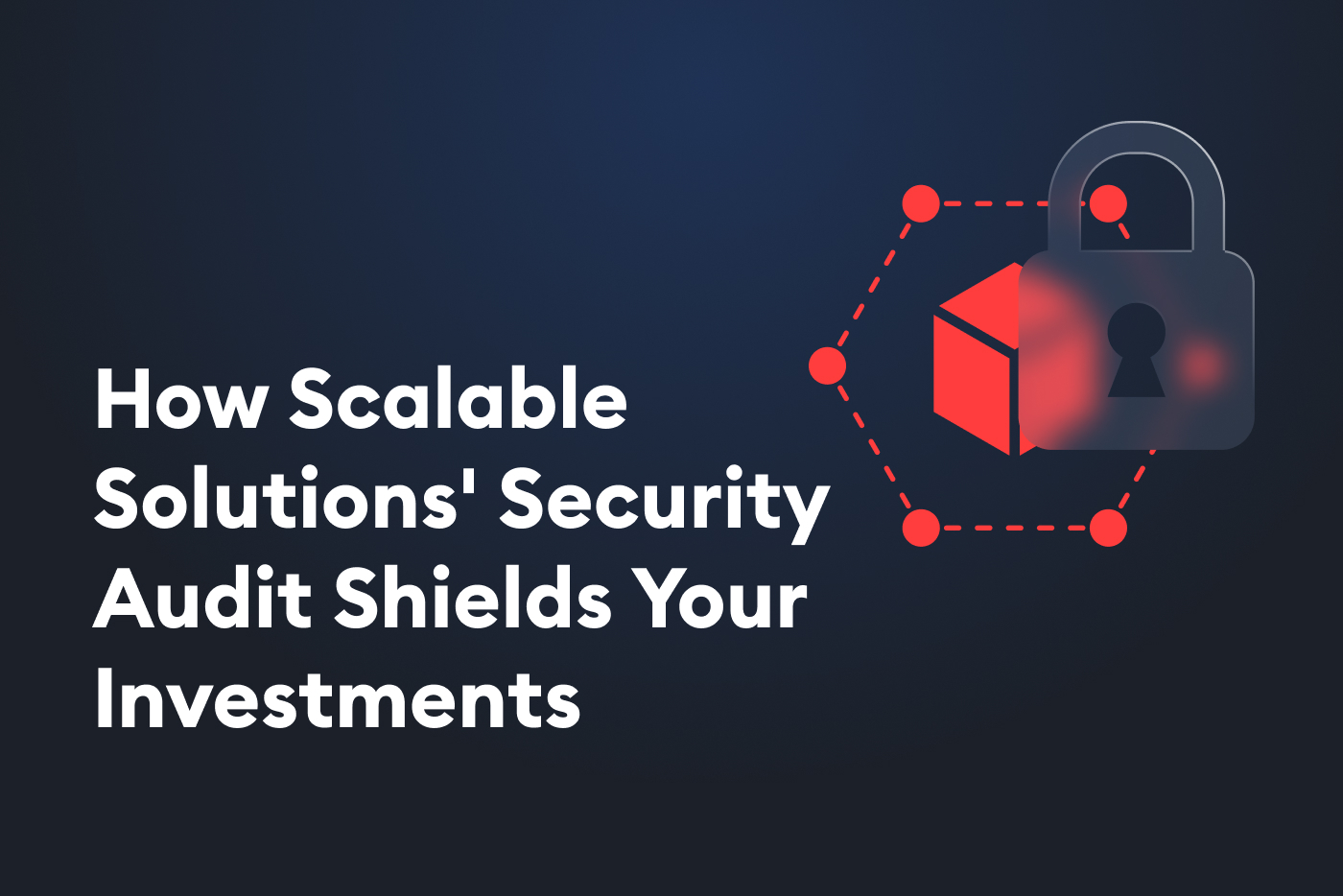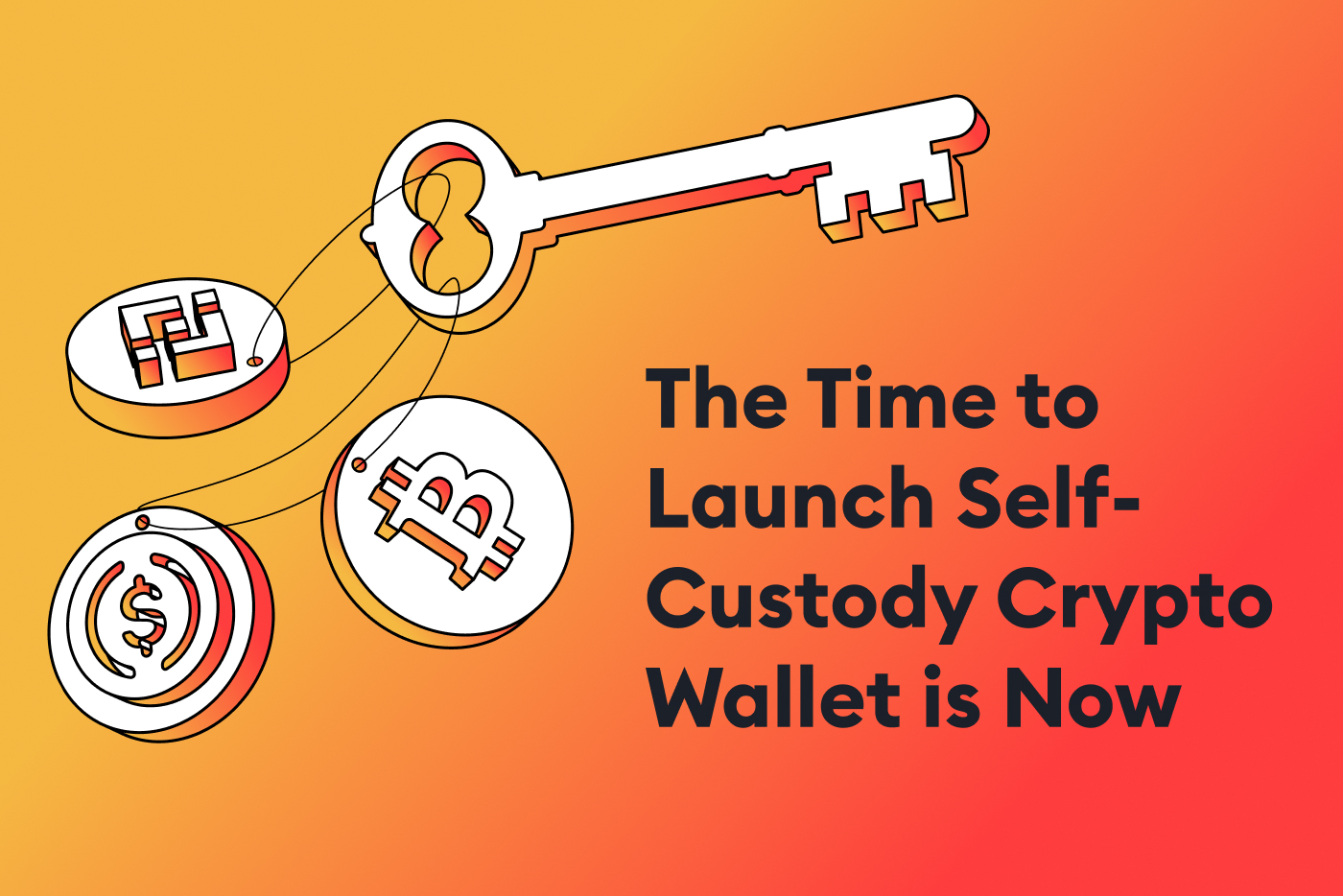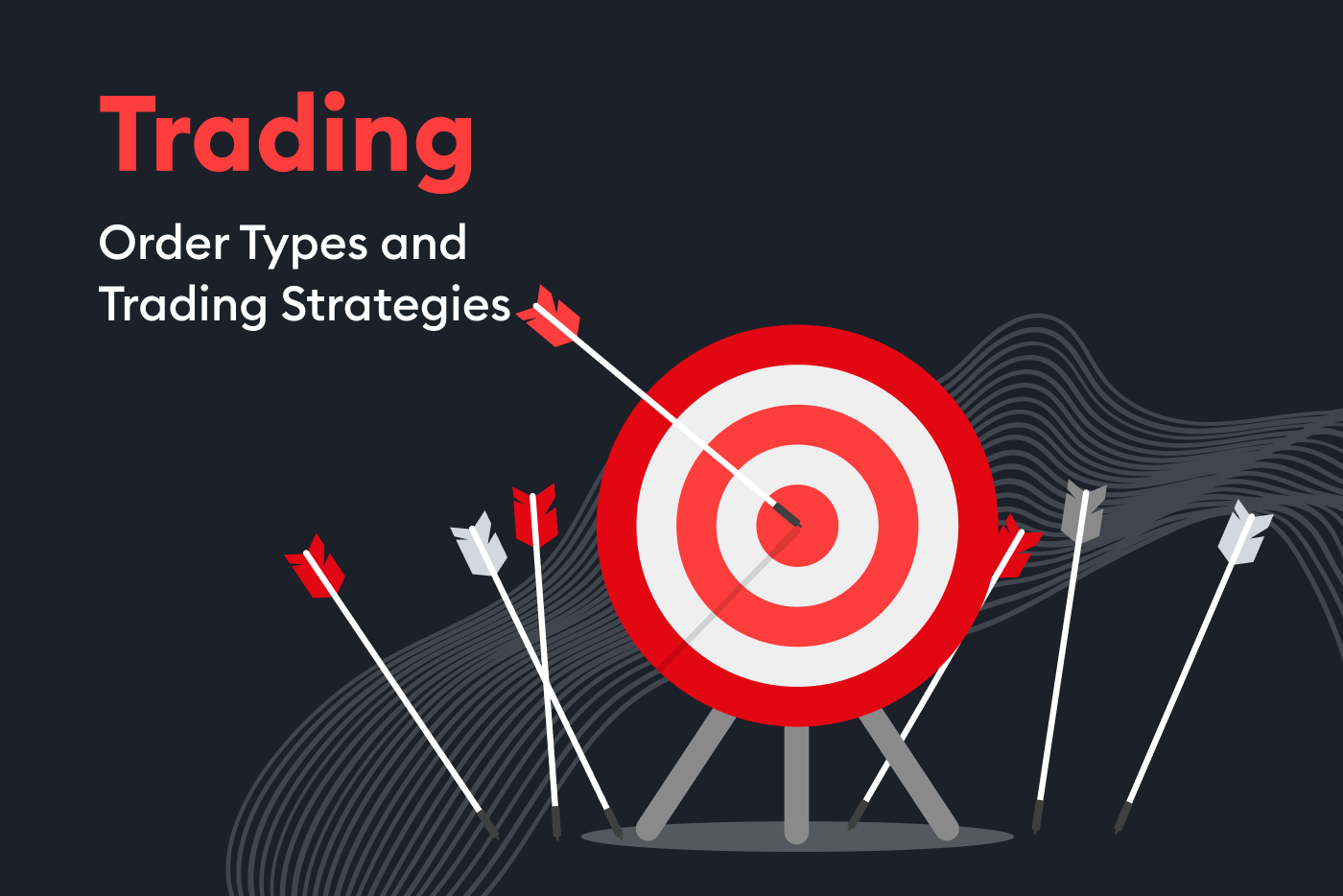
When you start trading, you may be confused by the variety of order types available. Here we’ll dive into this topic and learn what the various order types are and when to use them.
When you interact with the market, you place a bid (buy) or ask (sell) order into the order book, which is then matched with the corresponding orders. But traders use different order types, depending on what their trading strategies are. Note that this article is based on the white-label exchange platform that Scalable Solutions offers, and order types can vary from one exchange or broker to another.
There are three main types of orders:
- Market Order — an instruction to buy or sell immediately at the current market price.
- Limit Order — lets you specify the best price for the order. A buy limit order will be executed for a limit price or lower, a sell limit order will be executed for a limit price or higher.
- Scaled Order* — a series of sell or buy orders at different prices (not a widespread order type).
Let’s dig deeper into each order type.
1. Market Order
A market order is the most basic type of order that is executed immediately close to a current price. Why close? In the relatively volatile cryptocurrency market, the last traded price may not be equal to the real execution price. If it’s a liquid market, slippage (the difference between an execution price and an expected price) will be close to zero.
a) Stop Market Order
A user can tick a stop option. A stop market order is an instruction to buy or sell when a market reaches an initially set stop price (trigger price). It is executed at a market price.
2. Limit Order
The limit order will be executed only at the specified price or better. A limit buy order will be executed at a price at the limit level or lower, and a limit sell order will be executed at a price at the limit level or higher.
A limit order stands in the order book immediately and is triggered when the set price is reached.
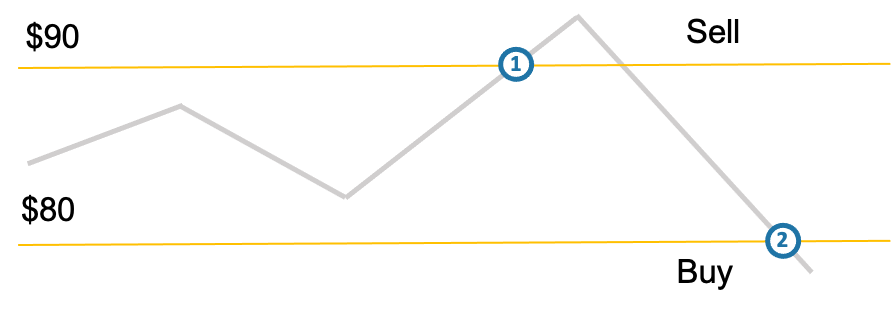
a) Time In Force Order
Time in force is a parameter that specifies the conditions for order expiry.
– Good-Til-Cancelled (GTC)
GTC is the most popular time in force order among advanced traders. In this case, you can set a time for the open position and it remains active until the trader cancels it.
– Immediate-Or-Cancel (IOC)
IOC order is often used for time-sensitive trades. In this case, you wish to buy all available quantities at the preferred price. So, if a trader wants to buy 100 BTC at a price of $20,000, but the broker/exchange has only 80 BTC at this price, the order will be executed for the available 80 BTC and canceled for the remaining 20 BTC.
– Fill-Or-Kill (FOK)
FOK type of order means that a whole order will be executed at a set timeframe, or fully canceled.
– Day
A day order is set to be executed during the trading day and expires when it ends.
– Good-Til-Date/Time
In this type of order, you set a specific date/time until your order remains active.
b) Stop Limit
A stop limit order is similar to a stop market order. The difference, in this case, is the existence of a limit on the price. This type of order allows you to set a stop price and a limit price, helping you manage your risks.
A stop-limit order is placed in the order book only when a stop-price is reached and is triggered when the limit price is reached.
Suppose, you want to buy ETH, as you think it’ll soon be in an upward trend. However, you don’t want to overpay if it starts to rise quickly, so you set a stop price at $1.680 and a limit price at $1.750. So, as soon as ETH reaches $1.680, your limit order is placed.
– Stop-Loss and Take-Profit Limit Orders
A stop-loss order is aimed to minimize traders’ losses. Suppose you bought Bitcoin at $20,000. Then you saw that the price is rising to $22,000. So, you make your stop-loss order at $21,000.

A take-profit order specifies the price at which to close an open position for profit. Suppose you bought Bitcoin at $20,000. Then you set your take-profit order at $25,000. If the price increases to $25,000, your order is filled and you get your $5,000 profit.

c) Post Only Limit Order
When you place a post-only order, it will only be placed into the order book, but not executed immediately. Because of the fact that post-only orders add liquidity to the market when your order is executed, you’ll be charged only a maker fee but not a taker fee.
d) Hidden Limit Order
This type of limit order is used to maintain anonymity in the market while buying/selling large amounts of crypto. Hidden orders mask the true size of the order, separating it into smaller chunks, or using an advanced algorithm to place small orders at the right times.
3. Scaled Order
Scaled order includes multiple limit orders at rising/declining prices. If it’s a bid, the limit orders will decline in price; if it’s an ask, the limit orders will rise.
Differences Between Main Order Types
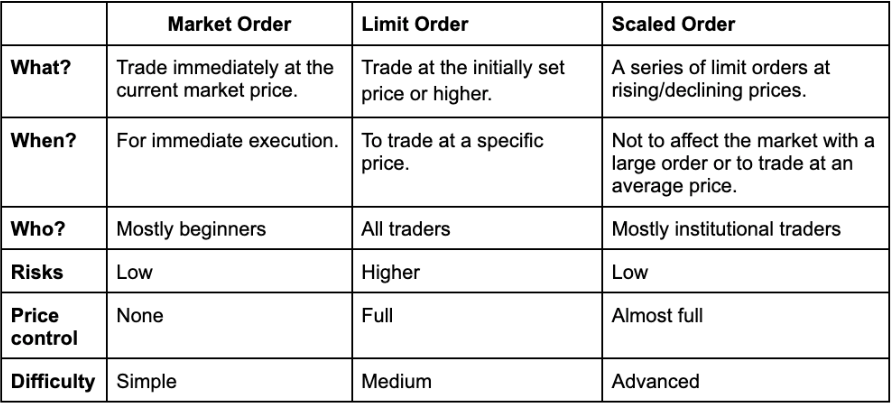
Q&A
Let’s now look at the most common use cases for the above-mentioned order types.
1. When to Use a Market Order?
Market orders are used when a trader needs his order to be executed (almost) simultaneously. For example, if a trader needs to take advantage of some real-time news, trade at high frequency, or use any other time-sensitive strategy.
2. When to Use a Limit Order?
Limit orders are used when a trader wants to buy an asset at a specific price. For example, when an asset is falling/rising quickly, and a trader placing a market order can be inefficient.
3. When to Use a Stop Market/Limit Order?
Most traders use a combination of stop-loss orders and take-profit orders to manage their risks. Suppose you want to sell or buy Monero. If its price reaches the take-profit level, your order is filled and closed for a gain; if its price reaches the stop-loss level, your order is filled and closed for a loss.
These types of orders are usually used by short-term traders, whose aim is to take profit at a set point and avoid the risk of the market turning down.
4. When to Use a Scaled Order?
Scaled orders are mostly used to avoid the impact of a large order on the market. Also, they are sometimes used to get a better average price.
Closing Thoughts
As you can see, order choice depends on a trader’s strategy, situation, and skills. A beginner or a long-term investor is more likely to choose a market order because a current market price is not a dominant factor for him/her. A more advanced trader, taking a chance in the short term, is likely to choose a limit or stop order, as these types reduce the risks. So, knowing the basics of order types will help you adapt to the current market situation and choose the strategy that works best for your goals.
As for the exchange, offering a wide variety of order types helps an exchange cater to all customer types: from beginners to institutional investors and from long-term investors to high-frequency traders. So, it serves as a very powerful competitive advantage and will attract and retain users. Scalable Solutions’ white-label crypto exchange platform is proud to have such advanced instruments and is eager to help you build and improve your business.
